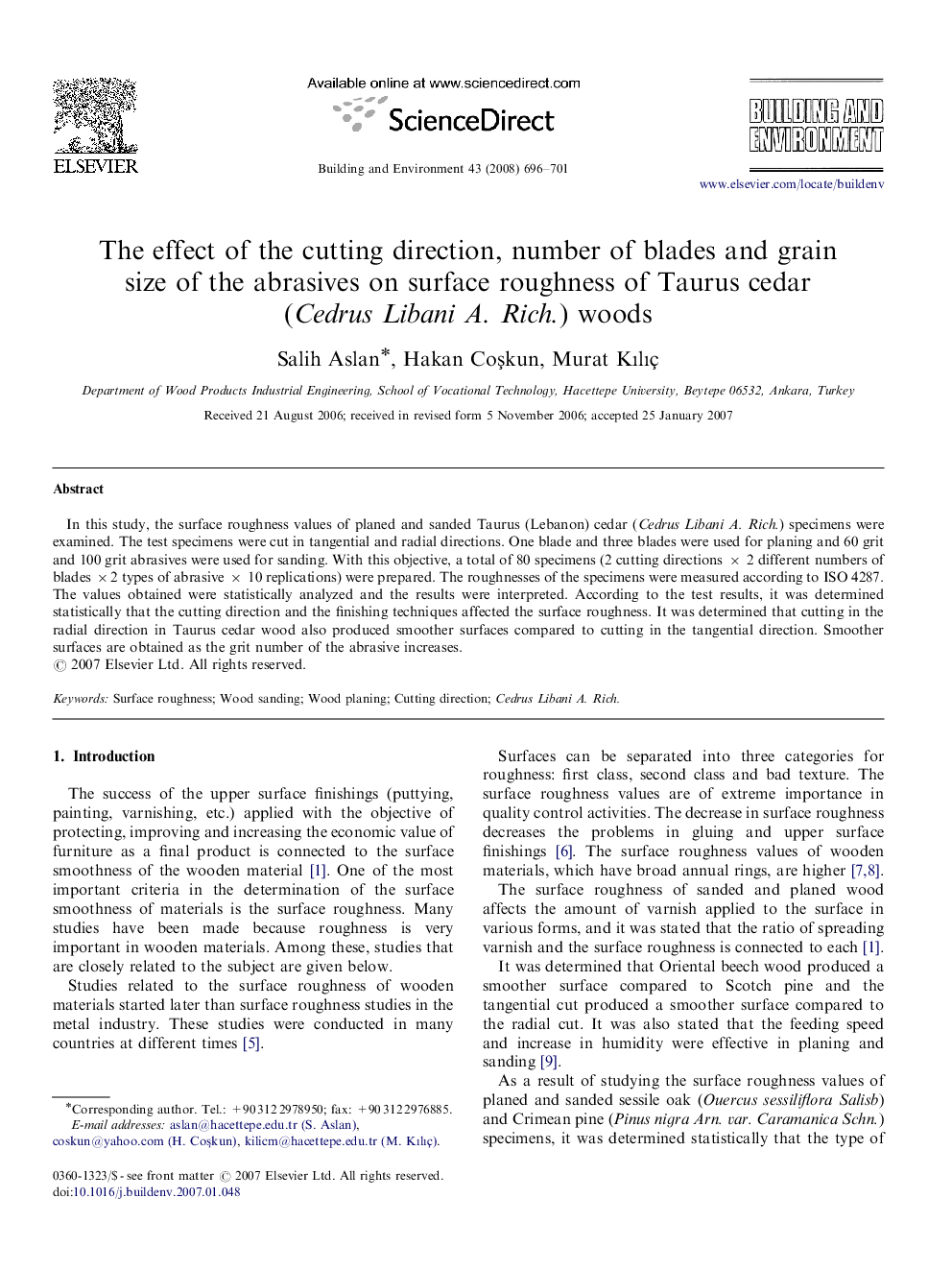| Article ID | Journal | Published Year | Pages | File Type |
|---|---|---|---|---|
| 249833 | Building and Environment | 2008 | 6 Pages |
In this study, the surface roughness values of planed and sanded Taurus (Lebanon) cedar (Cedrus Libani A. Rich.) specimens were examined. The test specimens were cut in tangential and radial directions. One blade and three blades were used for planing and 60 grit and 100 grit abrasives were used for sanding. With this objective, a total of 80 specimens (2 cutting directions × 2 different numbers of blades ×2 types of abrasive × 10 replications) were prepared. The roughnesses of the specimens were measured according to ISO 4287. The values obtained were statistically analyzed and the results were interpreted. According to the test results, it was determined statistically that the cutting direction and the finishing techniques affected the surface roughness. It was determined that cutting in the radial direction in Taurus cedar wood also produced smoother surfaces compared to cutting in the tangential direction. Smoother surfaces are obtained as the grit number of the abrasive increases.
